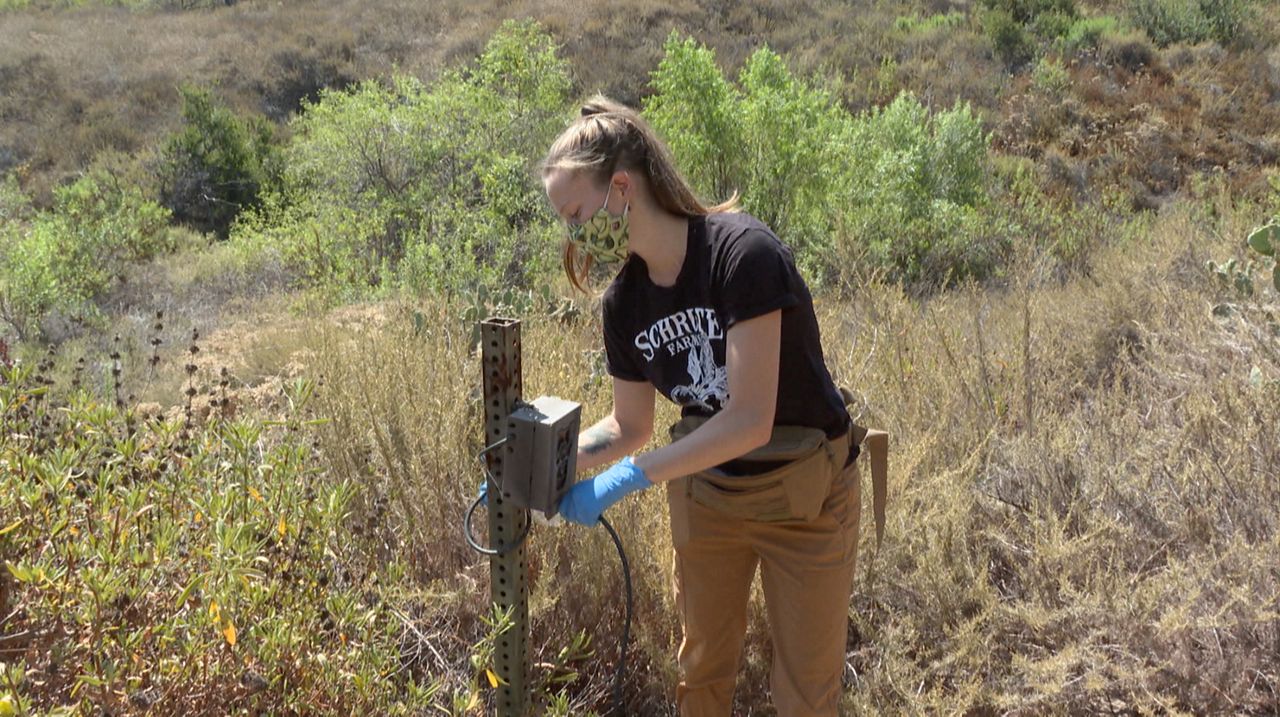ORANGE, Calif. — Scientific research is pretty physically demanding. California State University, Long Beach graduate student Katrina Moore maintains more than 20 outdoor cameras spread across Orange County on public and private land.
They are motion activated with lures to attract wildlife.
“I really like looking through the pictures when I bring the memory cards home. It’s just fun to see whatever happened,” Moore said.
She’s investigating how animals respond to human activity.
It’s certain the pandemic will affect her findings. People are stuck at home with few options other than the outdoors. Perhaps people are outside more and scaring off wildlife, or maybe wildlife are adapting to humans and are less timid.
“I think we’re definitely going to see some changes and it’ll be interesting to see what kinds of changes. I think it’s going to depend on how people are reacting to the pandemic,” Moore said.
Moore captures all kinds of things on the cameras, yet she’s focusing on two species: the 9-banded armadillo and the striped skunk.
Her findings might keep you out of the spray.
“I think that’s kind of part of what this project is trying to do. It’s trying to see how they interact in those urban areas to maybe make people a little less afraid of them… We’re encroaching on their land and they’re just trying to make do. So I think we’re trying to figure out how we can best live with them,” Moore said.
The cameras are part of the Urban Wildlife Information Network, which spans the continent. These additional lenses will add data to Moore’s research.
There is a problem though. People are destroying cameras, as many as five since Moore joined the lab a year ago.
If privacy is the concern, Moore’s advisor Dr. Ted Stankowich said images of people are always deleted.
“To have one camera or a whole setup stolen or vandalized is really a hardship for us in the lab and we’re trying to minimize how often that actually occurs,” Stankowich said.
The cameras alone cost upwards of $130 each.



